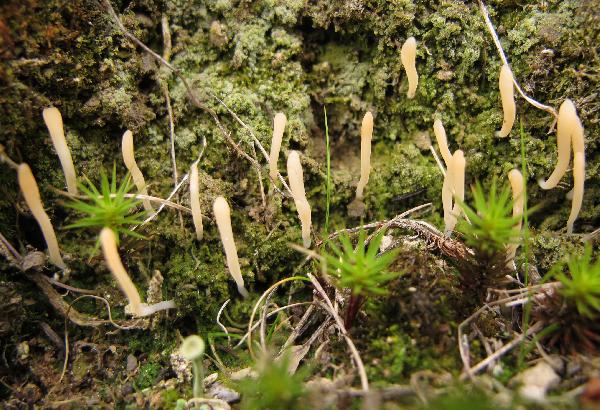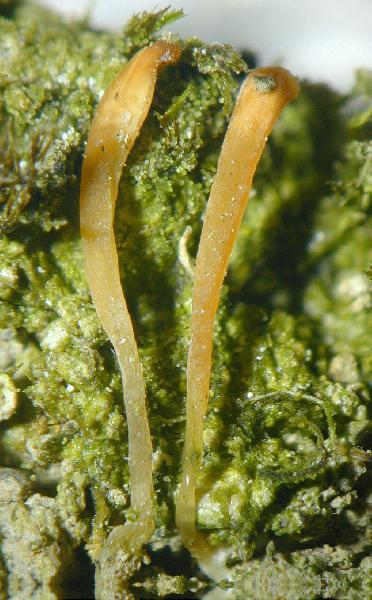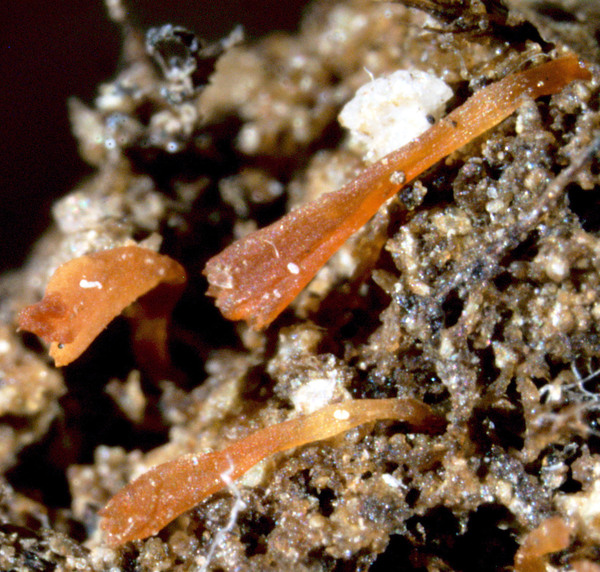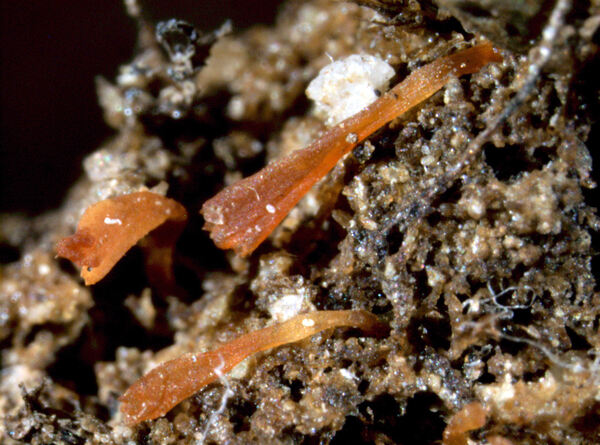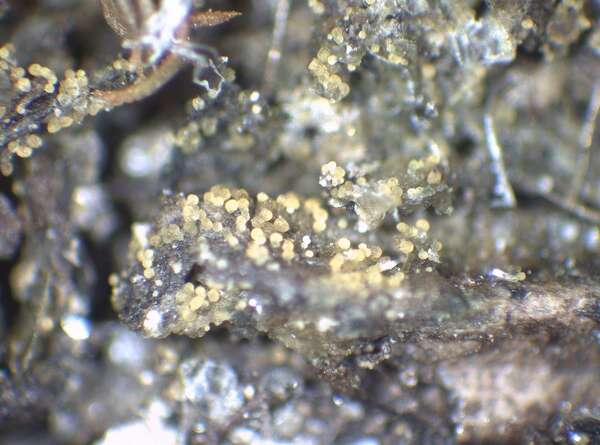Multiclavula corynoides (Peck) R.H.Petersen
American Midland Nat., 77: 215, 1967.. Basionym: Clavaria corynoides Peck - Ann. Rep. N.Y. St. Mus. nat. Hist. 31: 39, 1878.
Synonyms:
Distribution: N - TAA (Nimis & al. 2018)
Description: Thallus crustose, episubstratic, forming a soft, gelatinous (when wet), green to grey-green film made of minute granules consisting of clumps of algal cells incompletely surrounded by hyphae. Basidiocarps not lichenized, ephemeral, simple, lobed or branched to sublacerate, 10-25 mm tall, geotropically oriented, often subspathulate or laterally compressed at apex, straw-coloured to pinkish, usually with a small, cap-like white spot at apex (best visible in the dry state), the hymenium extending over c. the upper two thirds. Basidia clavate, bearing a basal clamp, with 4-6 short sterigmata. Basidiospores 1-celled, hyaline, elongate-ovoid to cylindrical, smooth, thin-walled, 5-8.5 x 2-3.5 μm, with a small eccentric apiculus, I-. Photobiont chlorococcoid. Spot tests: all negative. Chemistry: thallus without lichen substances.Note: a terricolous species with yellowish, straw-coloured to pinkish carpophores which are often subspathulate or laterally compressed toward the apex, and 4-6-sterigmate basidia; widespread in the Holarctic region, but most common in the boreal zone; in the Alps at higher elevations, with a still insufficiently known distribution.
Growth form: Crustose
Substrata: soil, terricolous mosses, and plant debris
Photobiont: green algae other than Trentepohlia
Reproductive strategy: mainly sexual
Commonnes-rarity: (info)
Alpine belt: absent
Subalpine belt: extremely rare
Oromediterranean belt: absent
Montane belt: extremely rare
Submediterranean belt: absent
Padanian area: absent
Humid submediterranean belt: absent
Humid mediterranean belt: absent
Dry mediterranean belt: absent
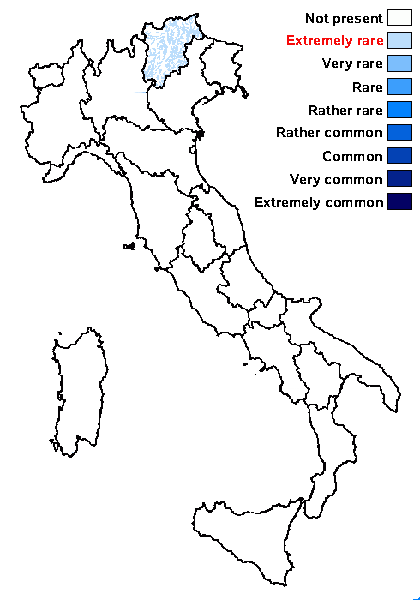
Predictive model
Growth form: Crustose
Substrata: soil, terricolous mosses, and plant debris
Photobiont: green algae other than Trentepohlia
Reproductive strategy: mainly sexual
Commonnes-rarity: (info)
Alpine belt: absent
Subalpine belt: extremely rare
Oromediterranean belt: absent
Montane belt: extremely rare
Submediterranean belt: absent
Padanian area: absent
Humid submediterranean belt: absent
Humid mediterranean belt: absent
Dry mediterranean belt: absent

Predictive model
 INDEX FUNGORUM
INDEX FUNGORUM
 GBIF
GBIF
 DOLICHENS
DOLICHENS
